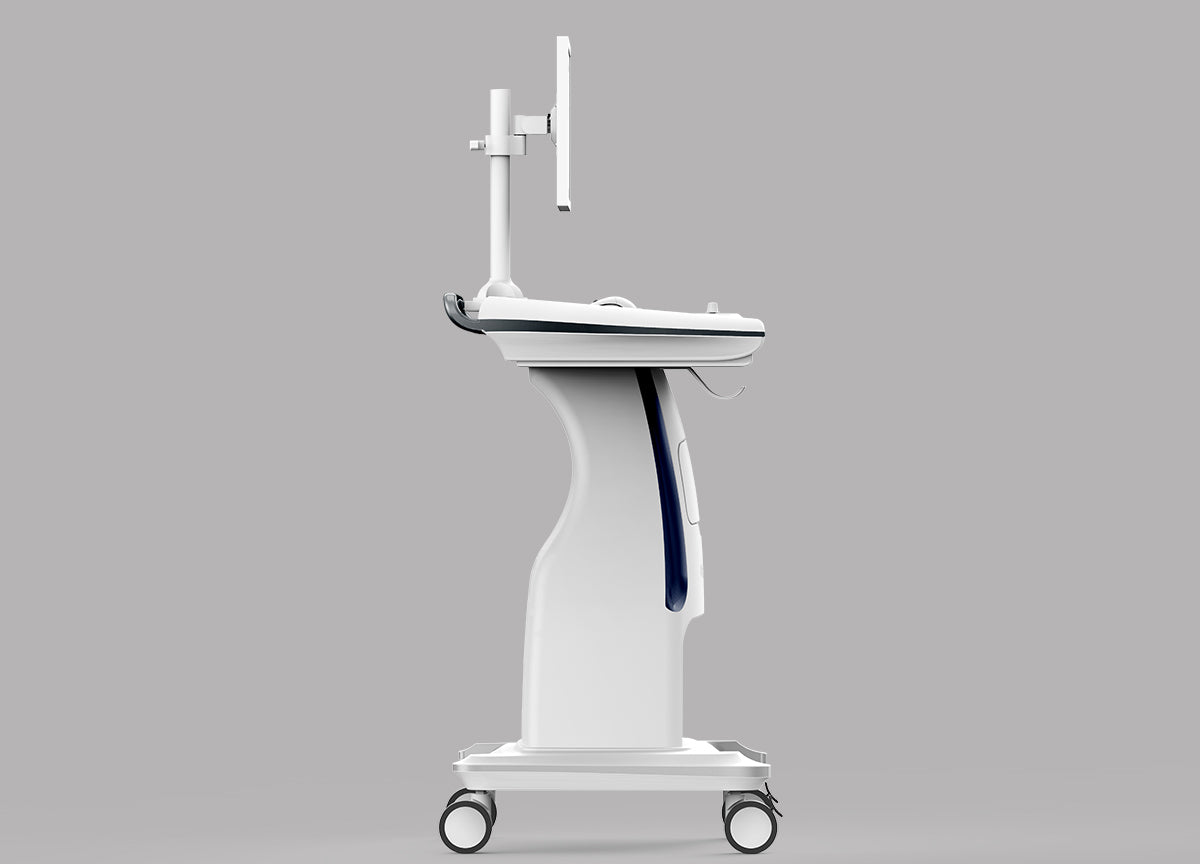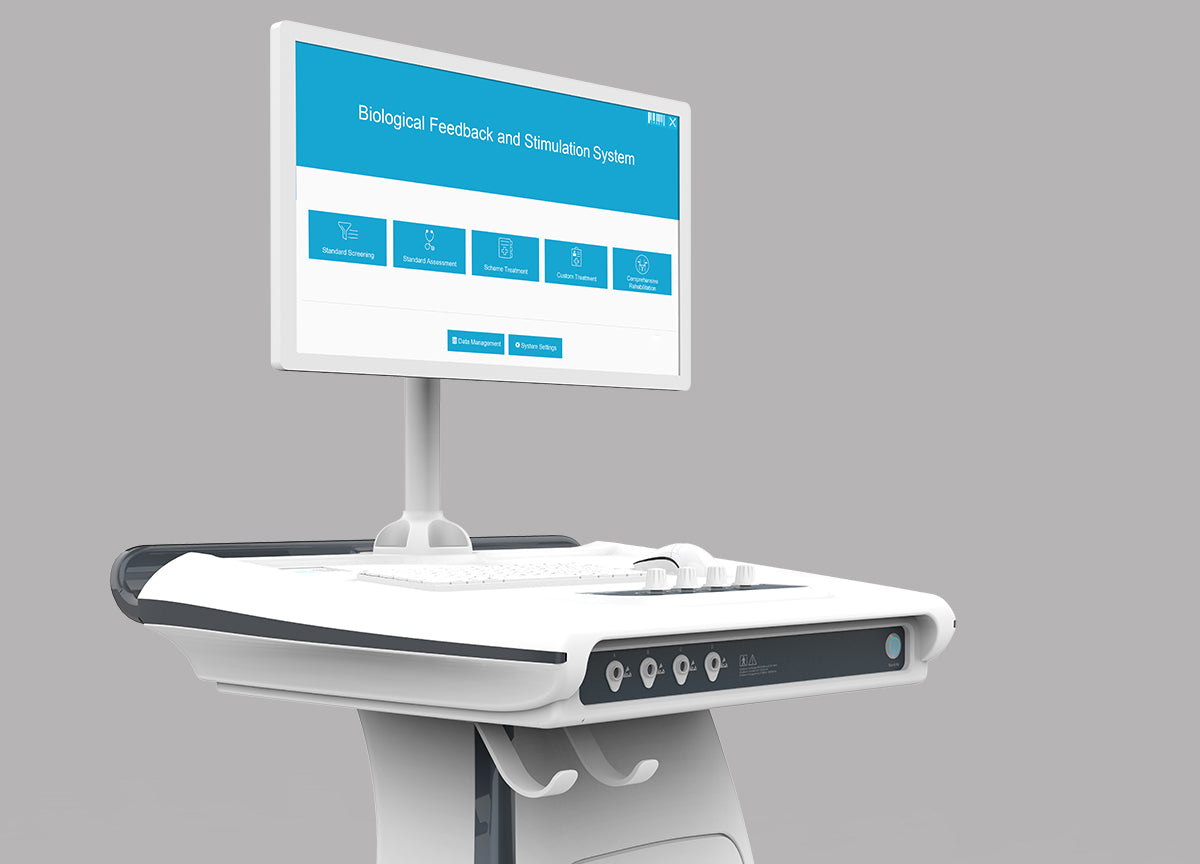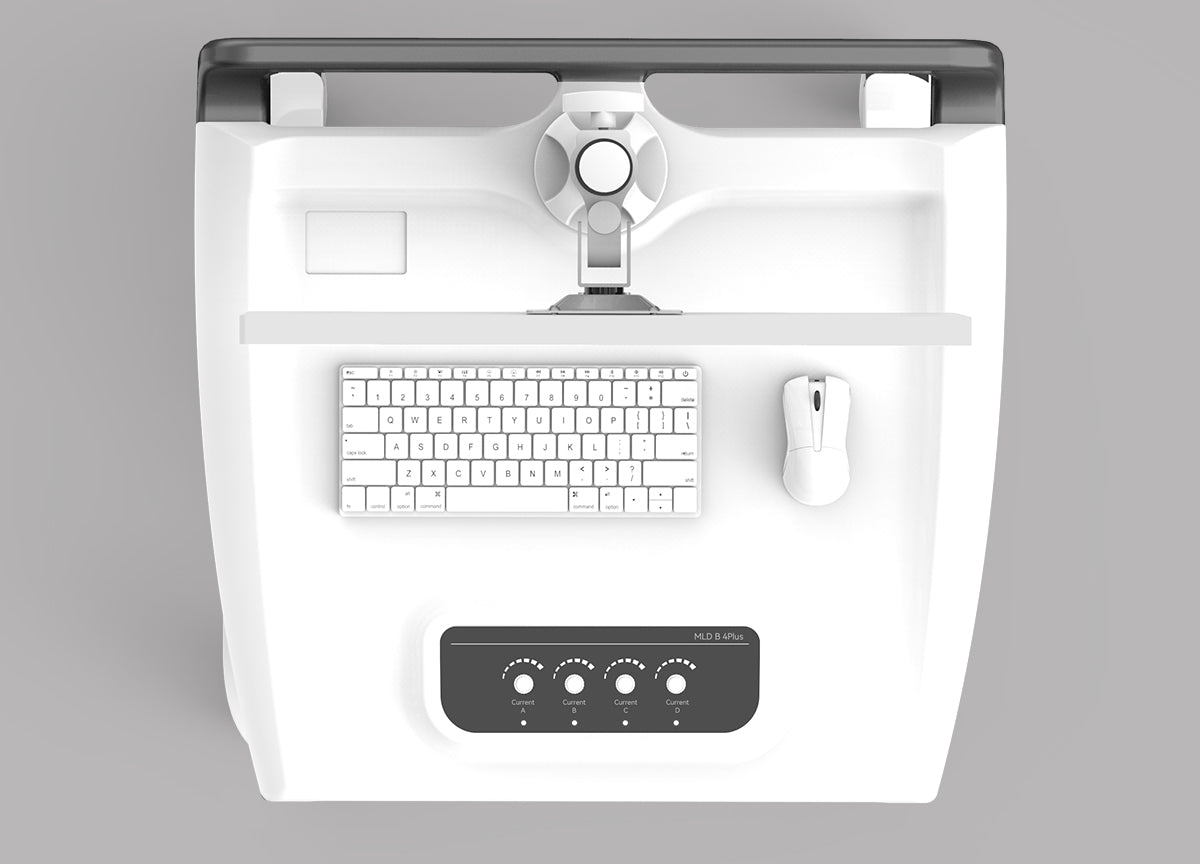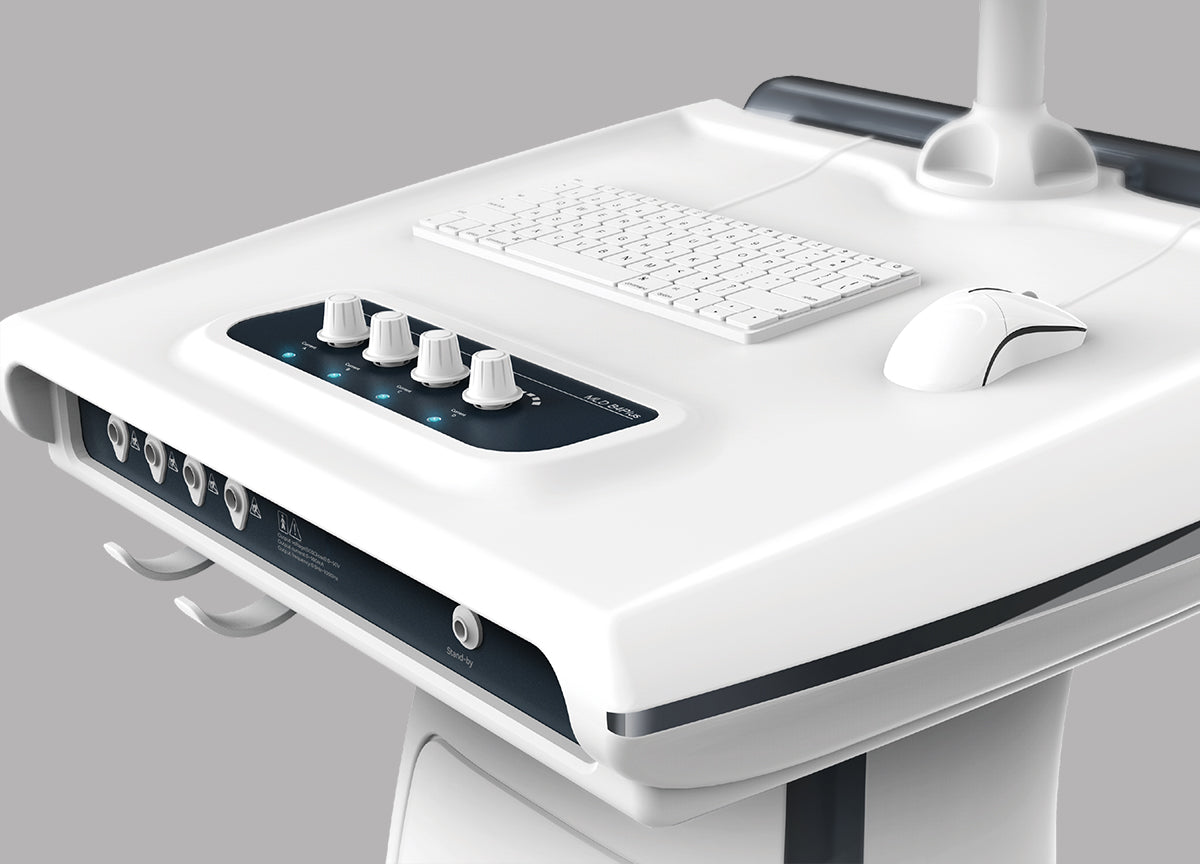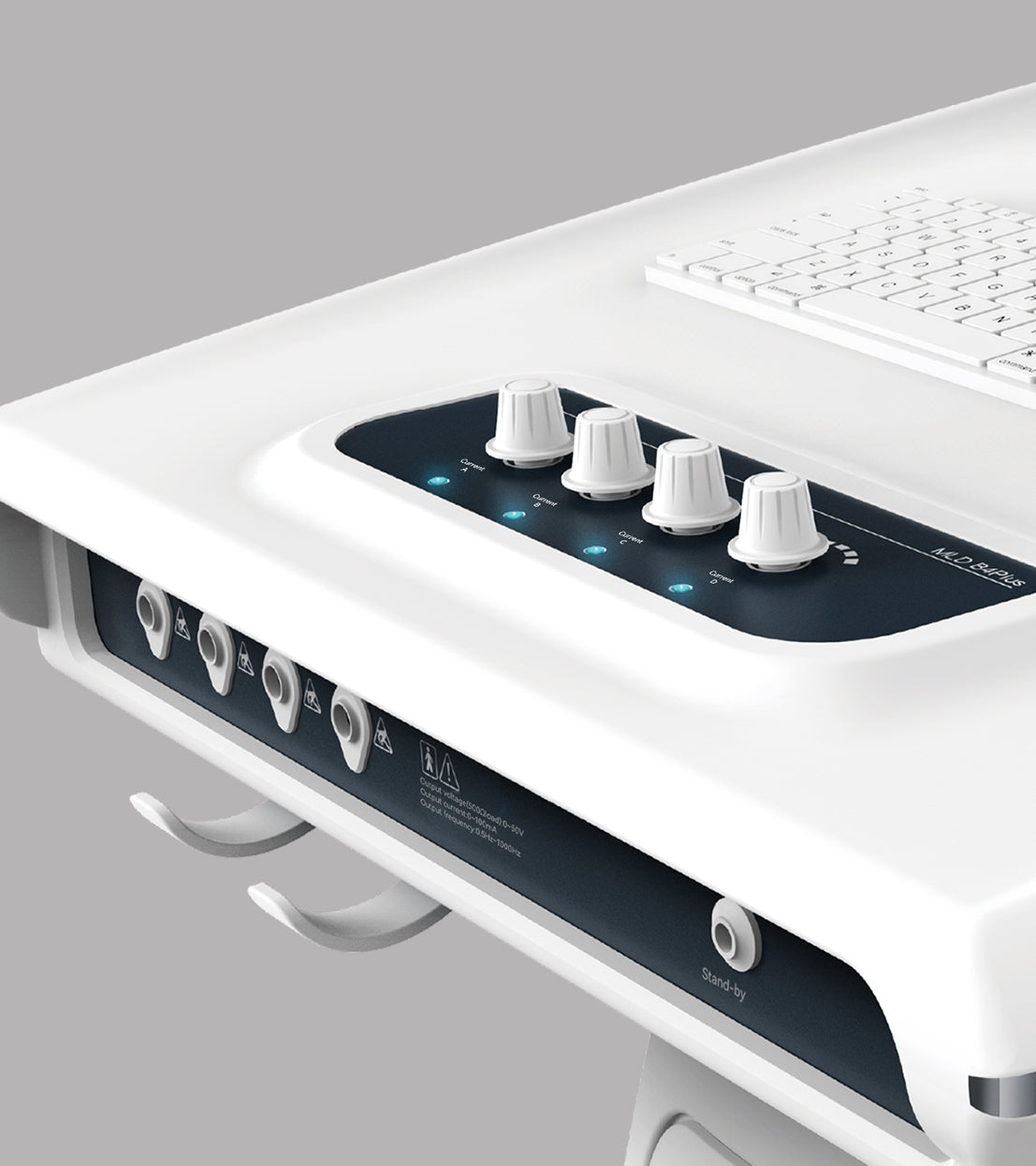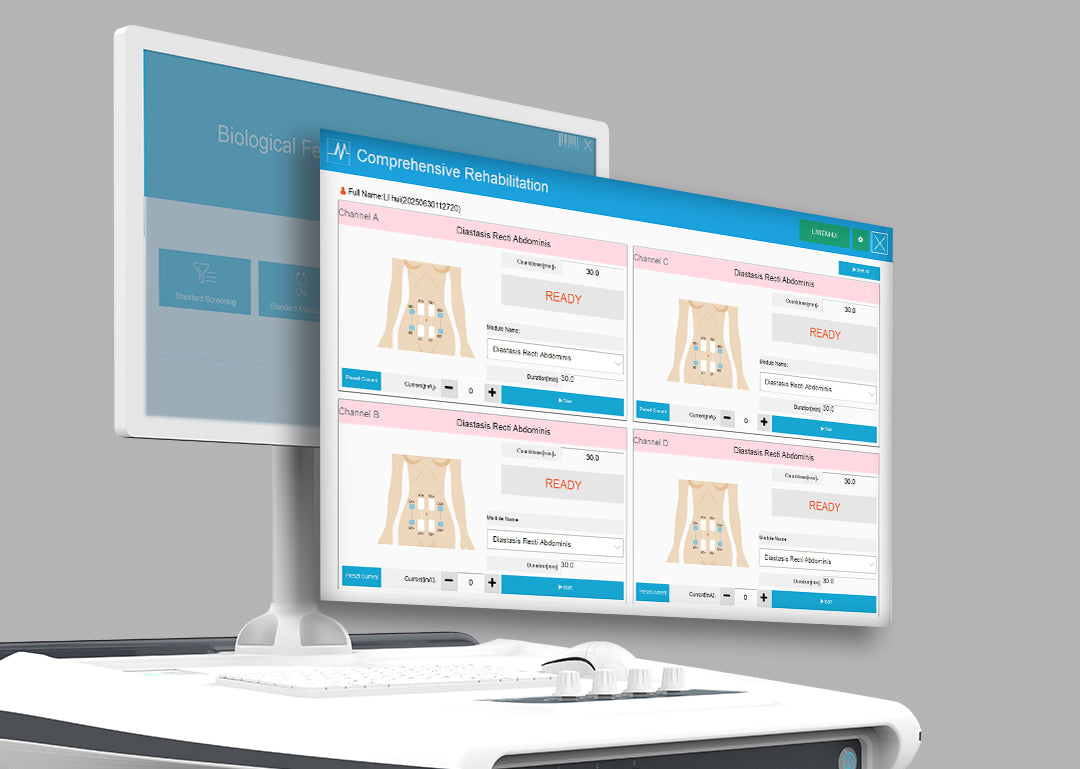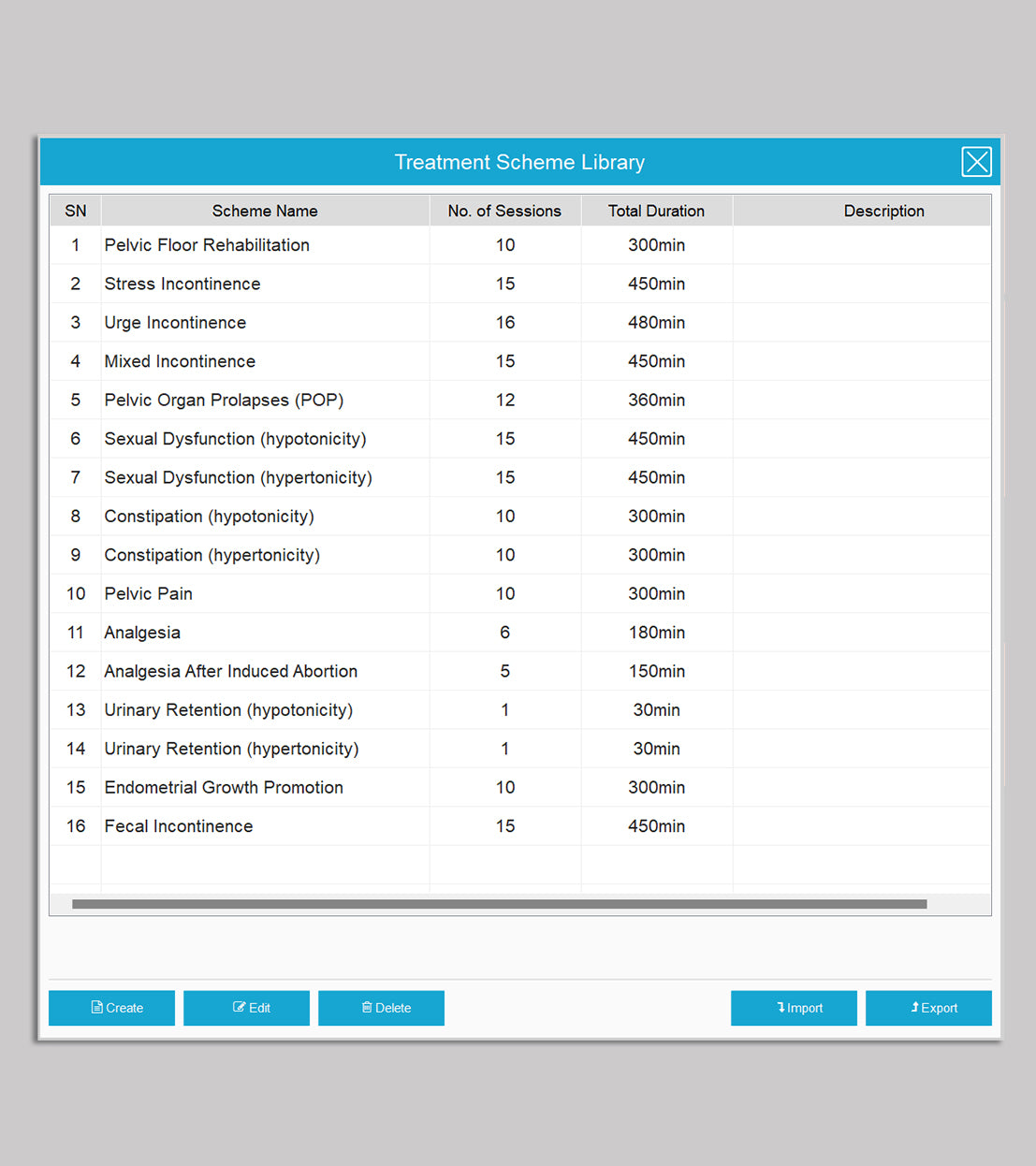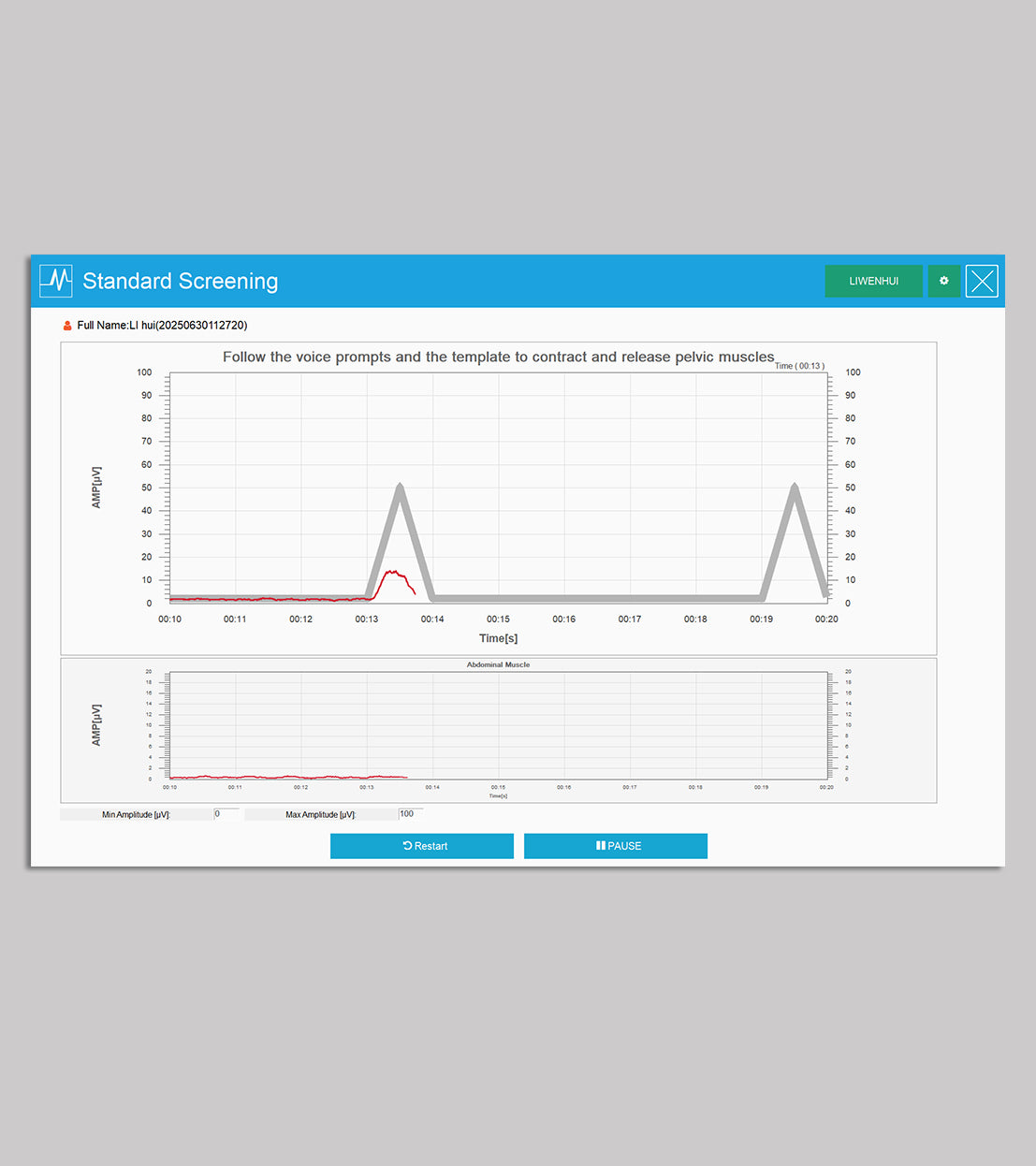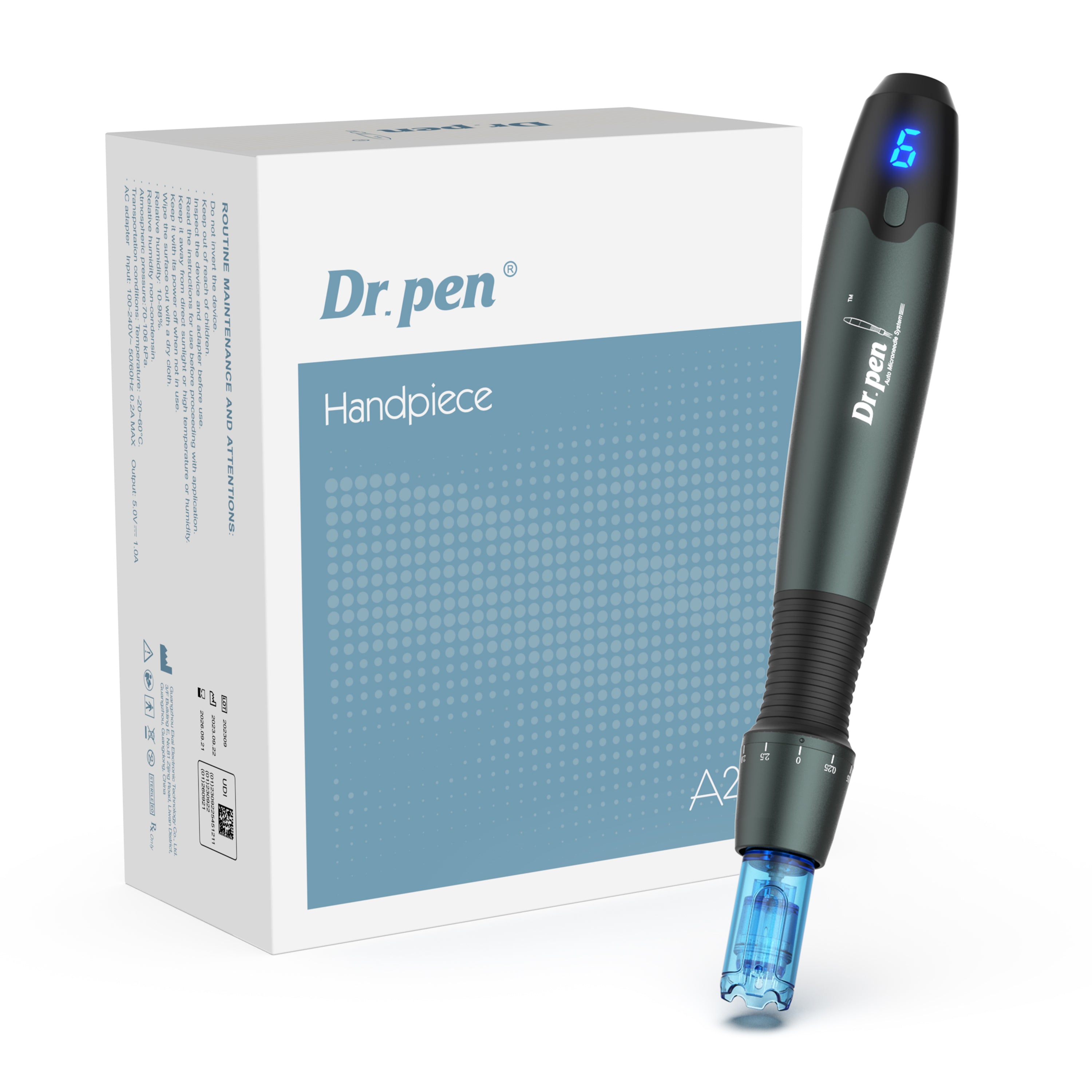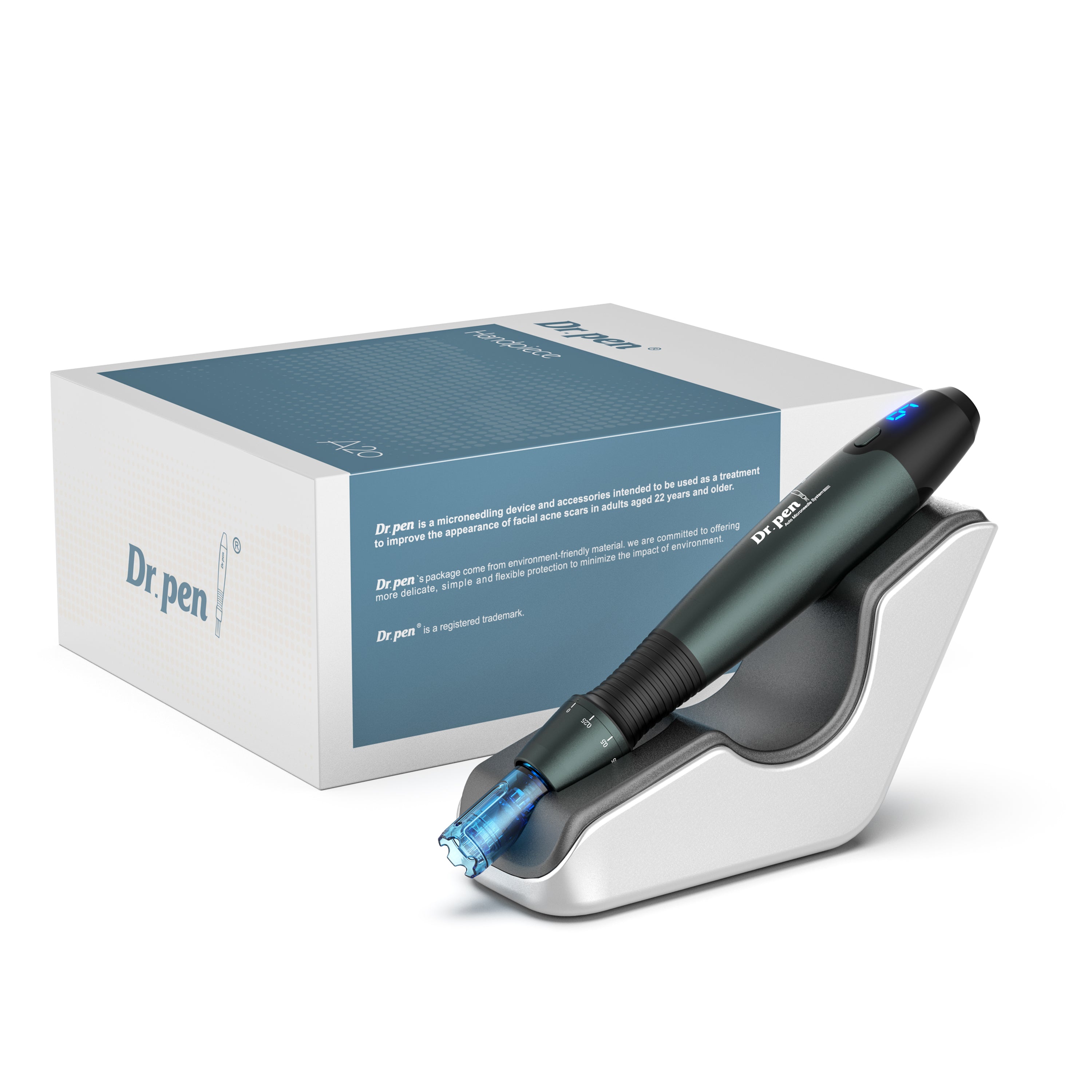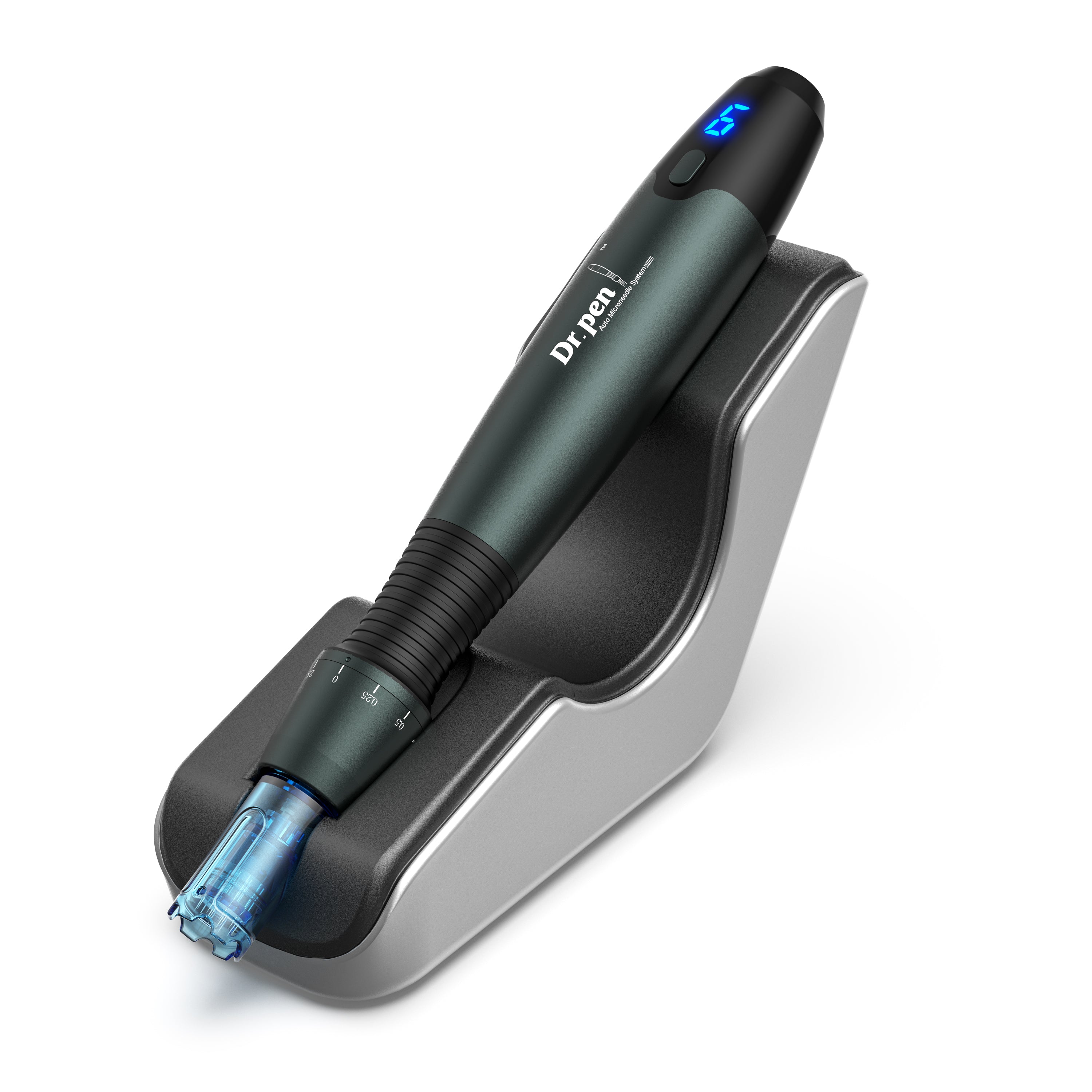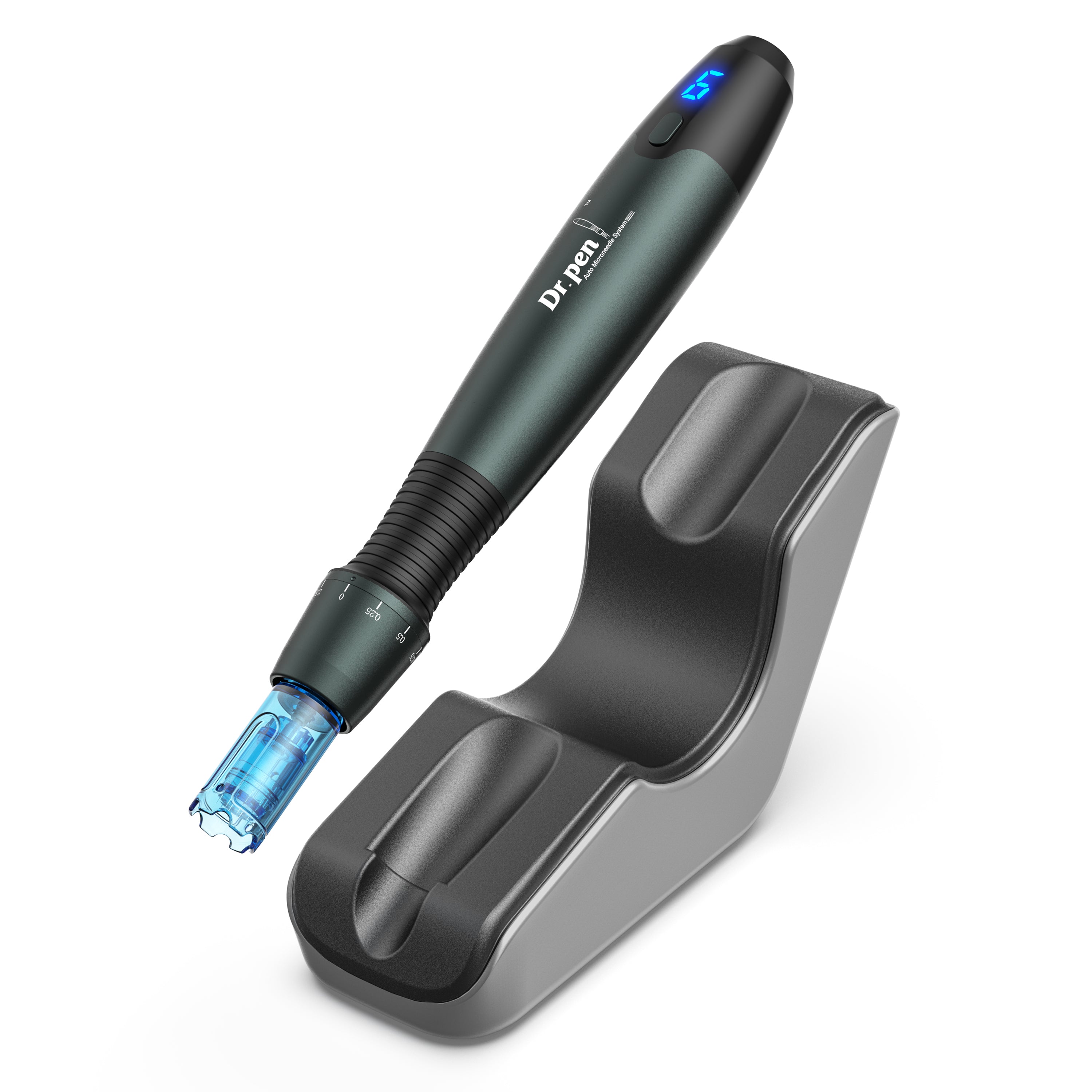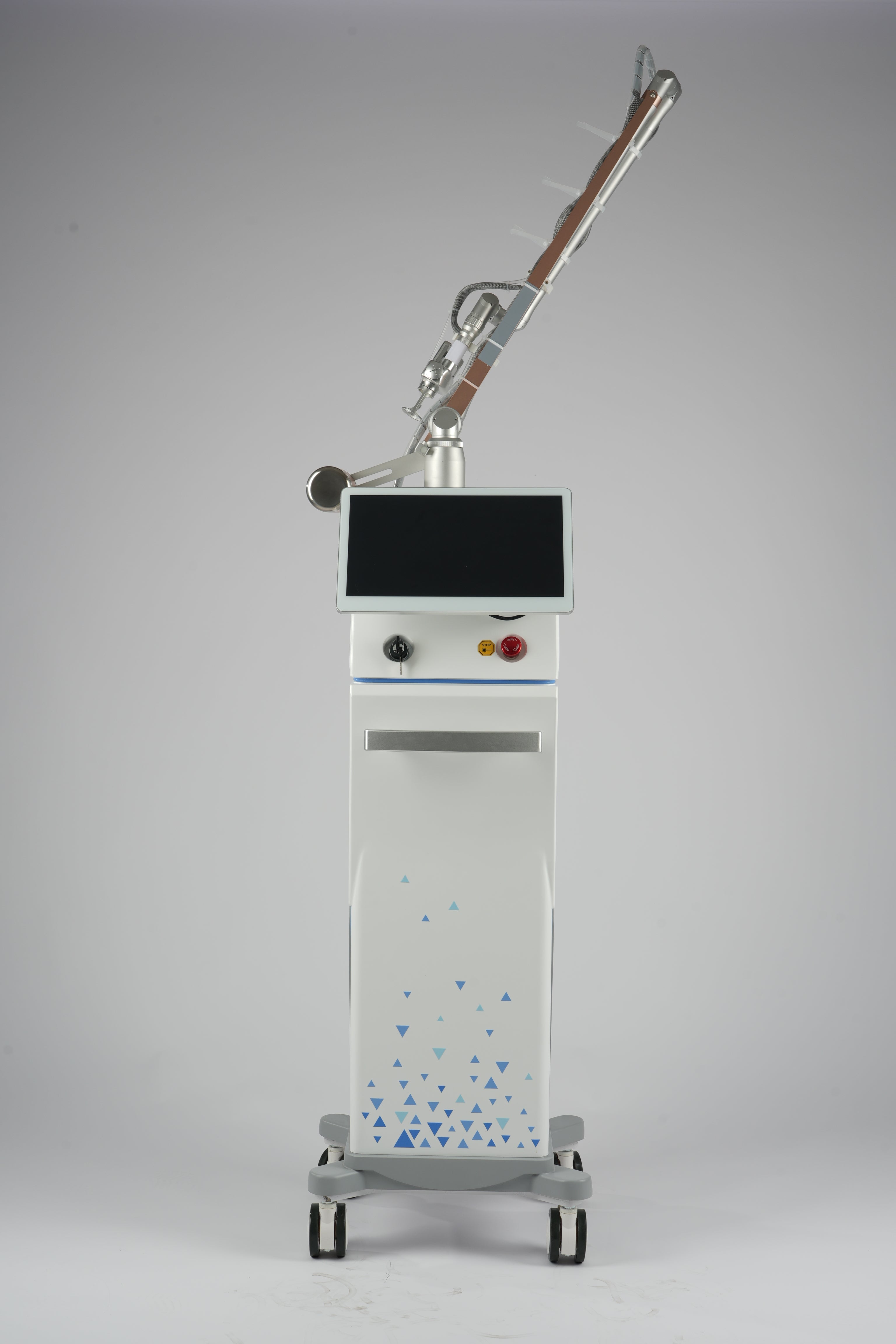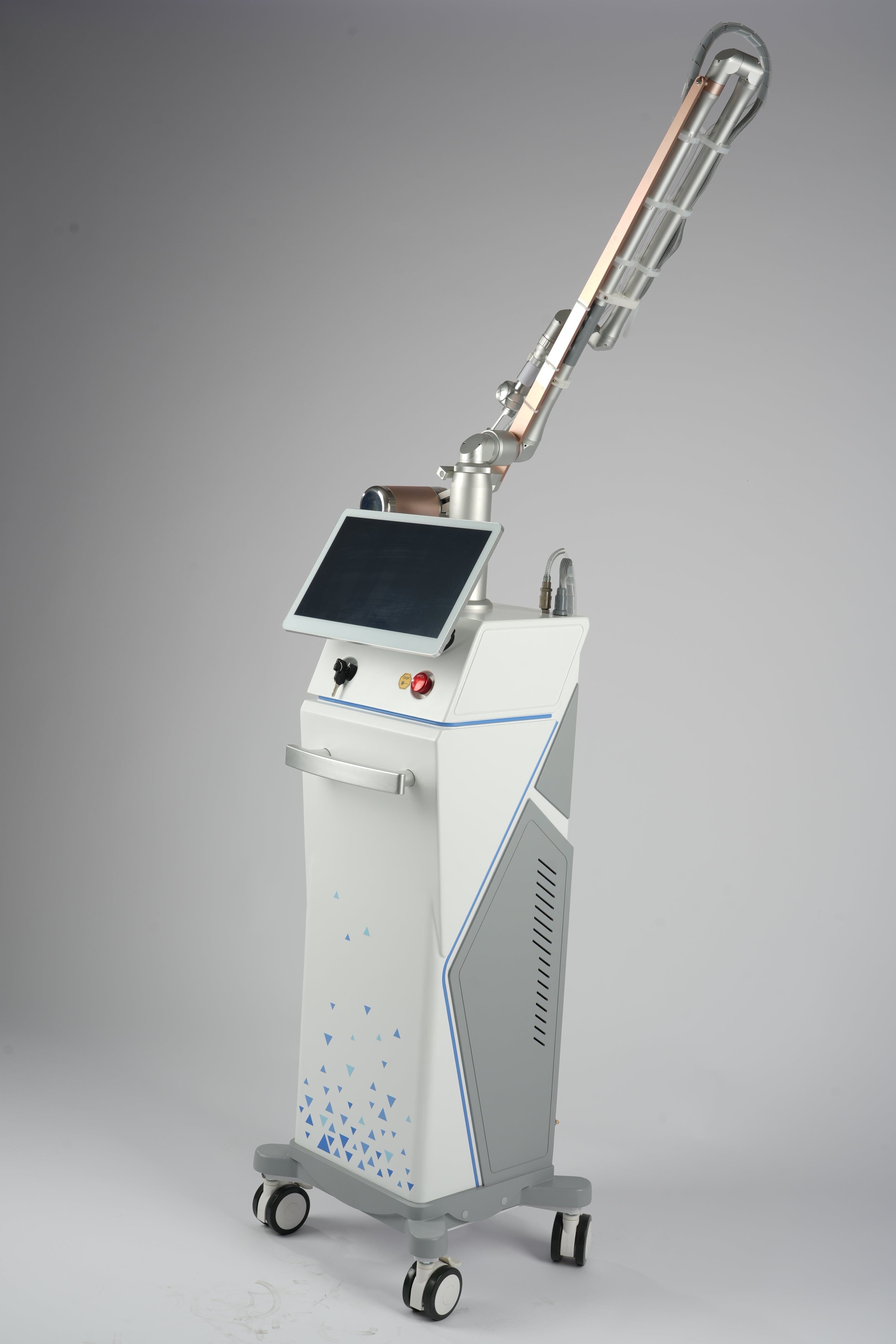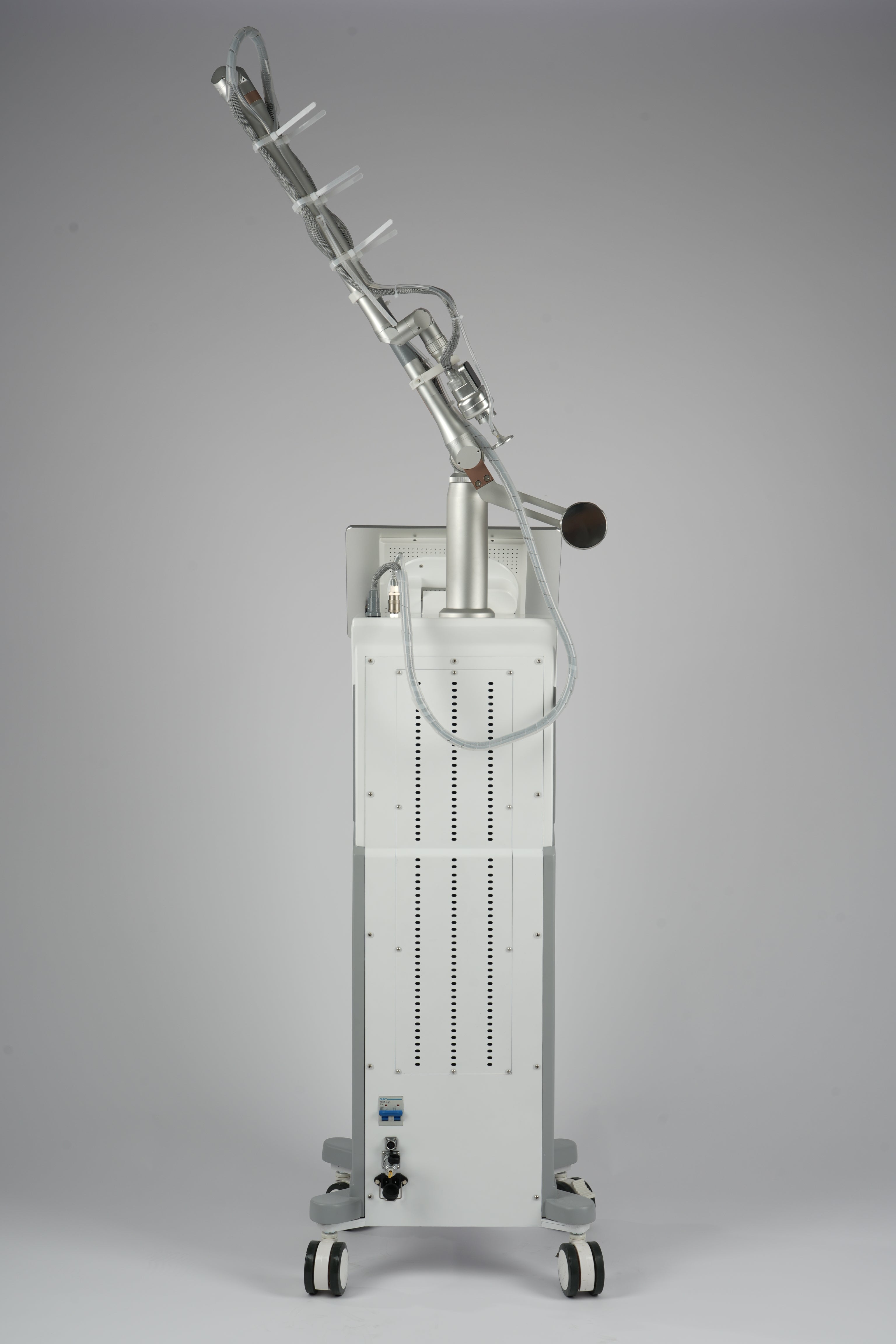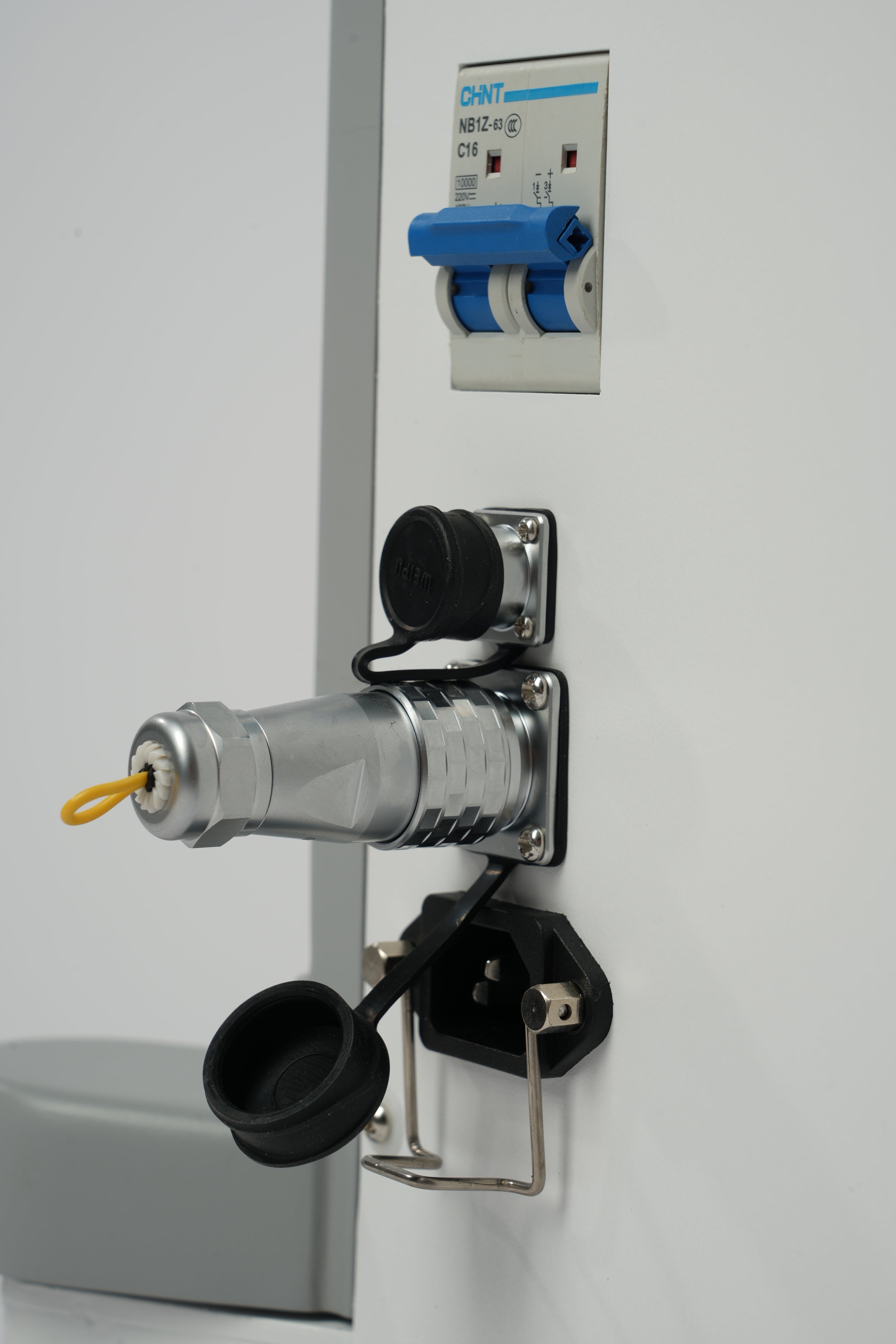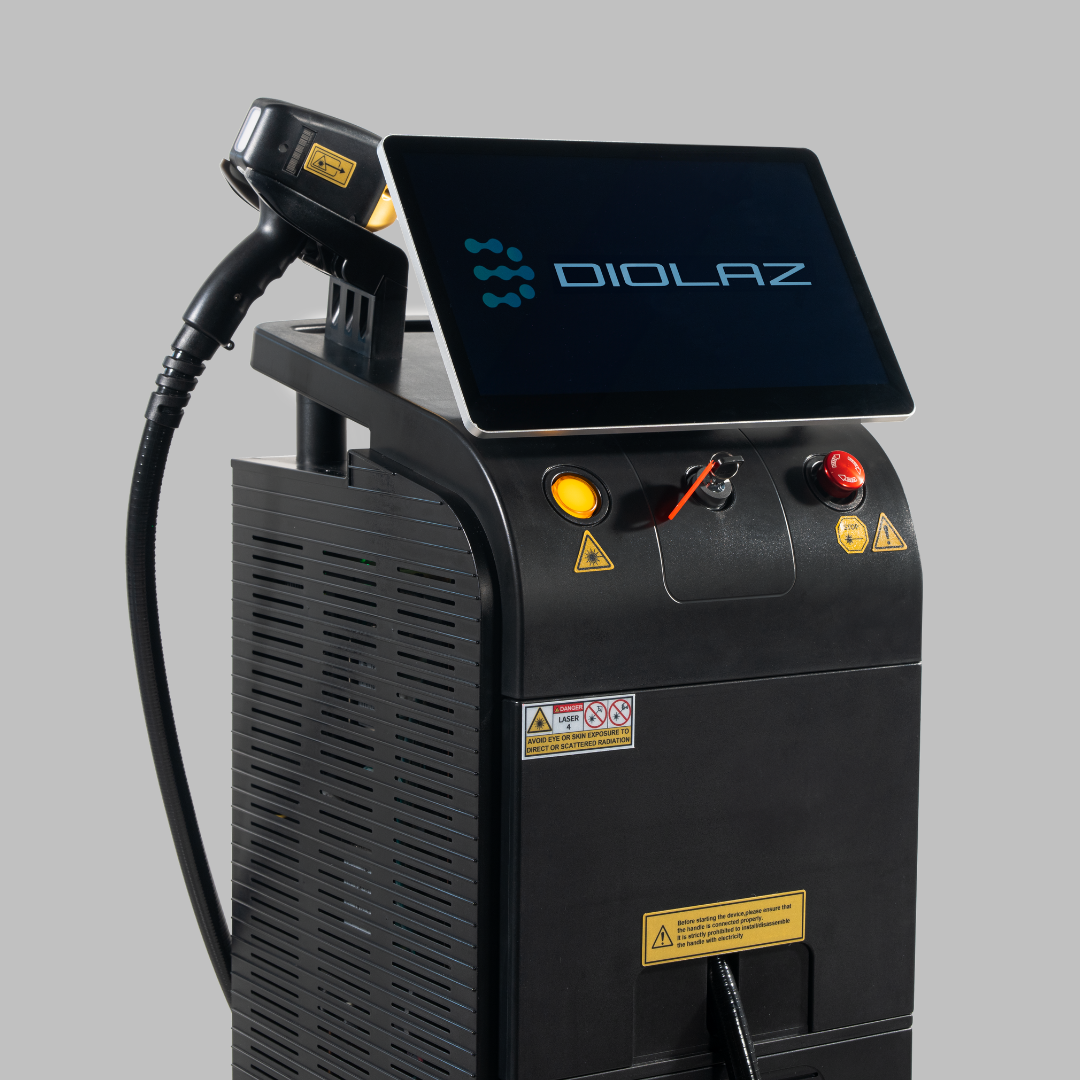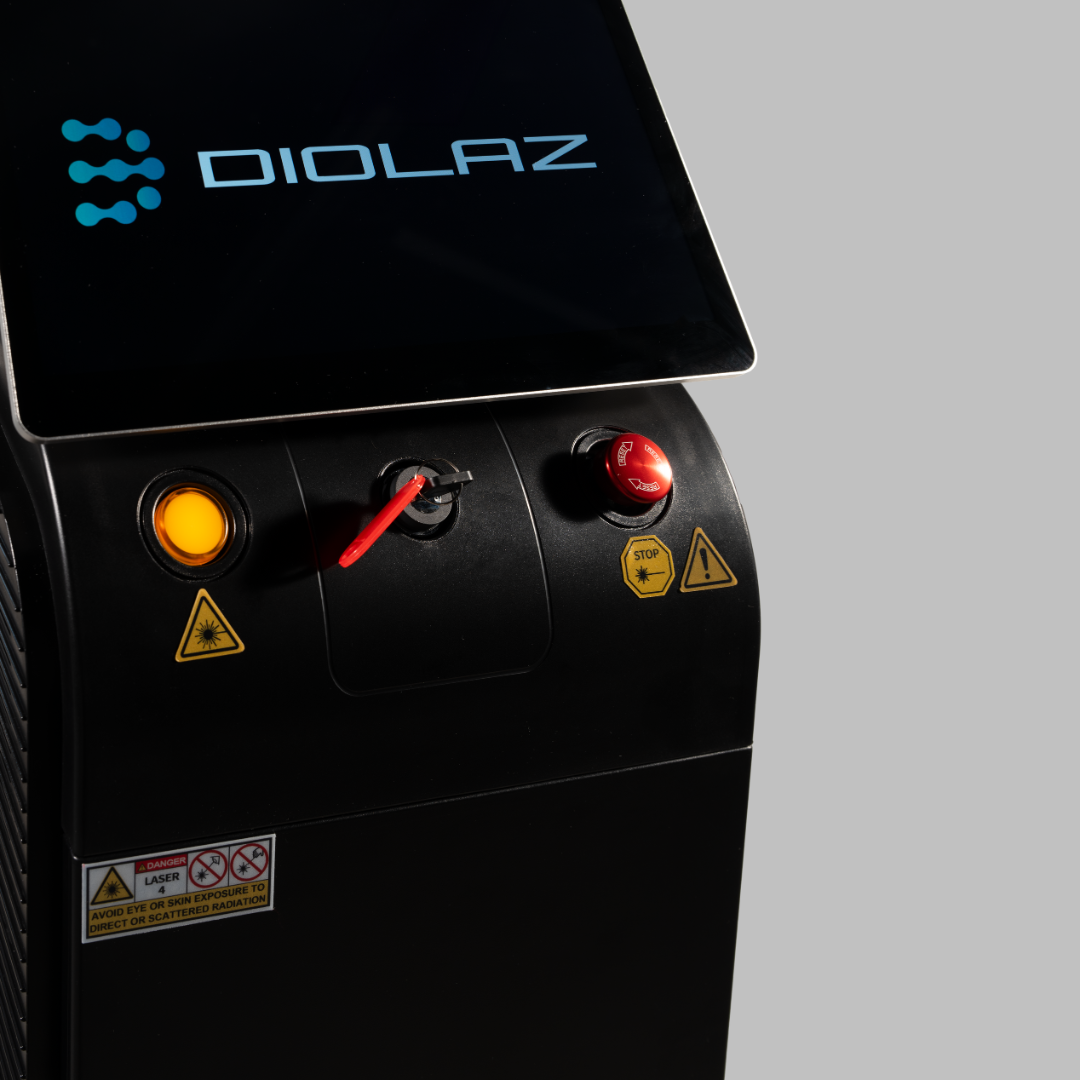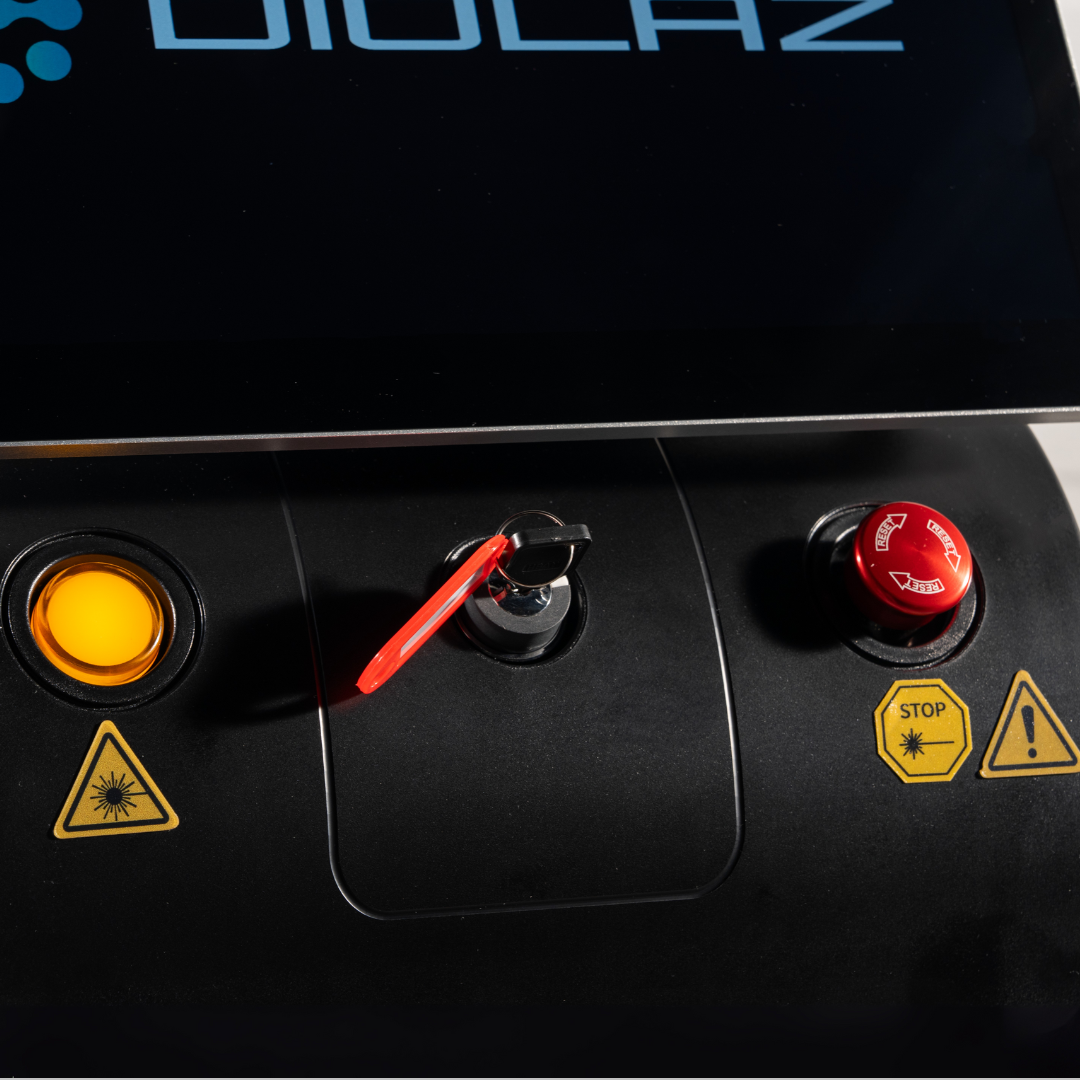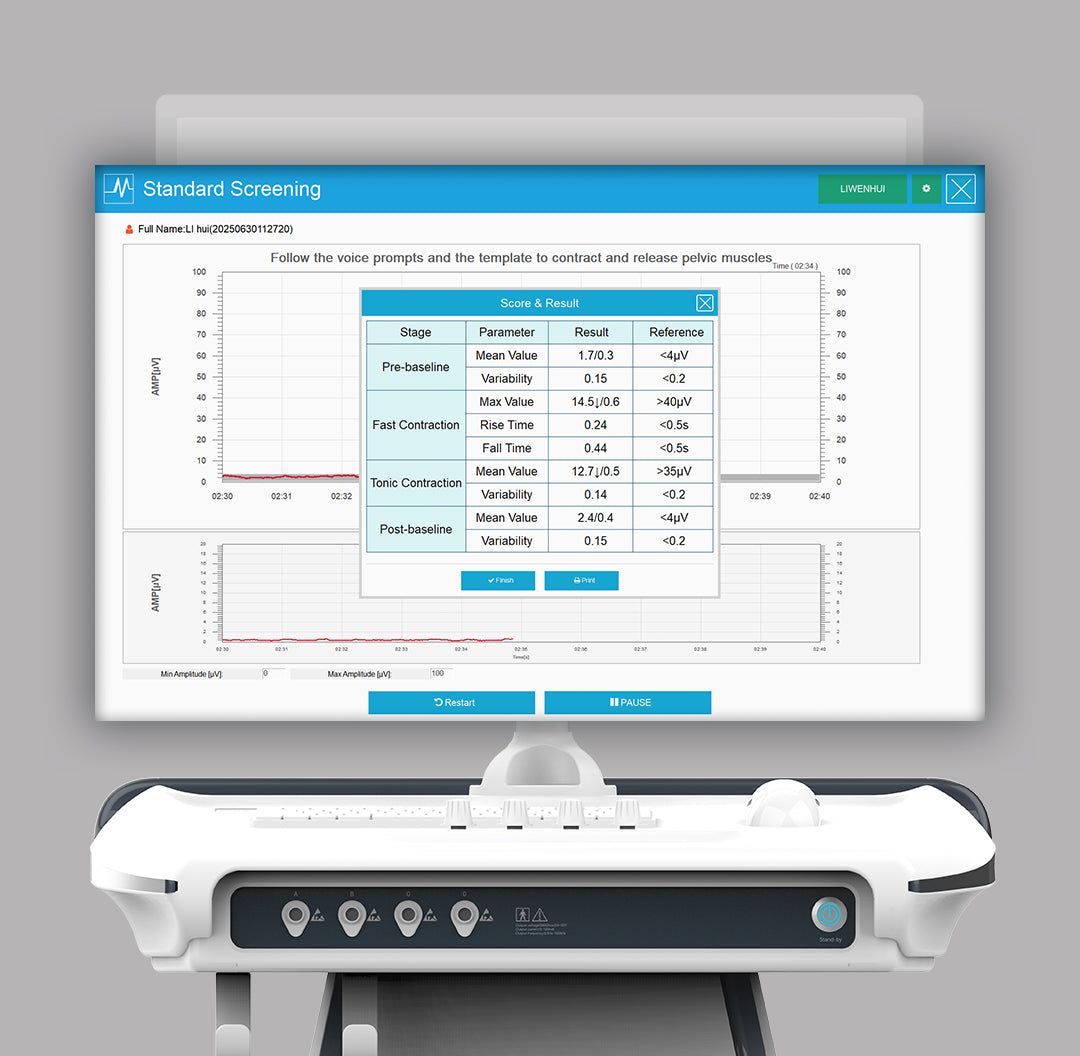
Want to Learn More?
Click below to Discover the DioLaz Pelvic Health System
View all Technical Details
Needs more information? Contact: Sales@diolaz.com
Key Features & Benefits
- Multi-Modal Therapy (EMG & Stimulation): Combines real-time sEMG biofeedback, low-frequency electrical muscle stimulation, and EMG-triggered stimulation for optimal neuromuscular re-education. Patients receive visual feedback and voice-guided cues to contract/relax properly, while the system automatically delivers stimulation when their muscle activation meets target thresholds. This dual biofeedback+stimulation approach accelerates pelvic floor muscle retraining.
- Four Independent Channels & Dual-Patient Capacity: Treat multiple muscle groups or even two patients simultaneously with four isolated channels (each channel supports both EMG sensing and electrical stimulation). All channels are fully configurable for biofeedback or stim, and the B4PLUS can run two rehab programs at once or a rehab + stim session in parallel. This 4-Channel system enables efficient, concurrent therapy – e.g. bilateral pelvic muscle training or combined pelvic and abdominal treatments – maximizing clinic throughput.
- Intelligent Auto-Treatment Planning: The B4PLUS software can auto-generate a personalized treatment scheme in as little as 30 seconds using the patient’s assessment data. After a pelvic floor evaluation or EMG screening, an algorithm analyzes the results and instantly creates a targeted, multi-session therapy plan. Clinicians can fine-tune or fully customize these programs, but the “one-click” auto-plan feature saves time and ensures each patient receives an optimized rehabilitation regimen.
- Extensive Program Library: Access 30+ expert-designed treatment programs addressing the full spectrum of pelvic health needs – from stress, urge, and mixed incontinence protocols to prolapse support, diastasis recti recovery, pelvic pain relief, sexual function enhancement, and more. The B4PLUS comes pre-loaded with comprehensive rehab modules (e.g. Lower Back Pain, Blood Flow Promotion, Postpartum Recovery, Lactation Promotion) that can be selected and run with ease. This broad program suite lets clinics immediately tackle virtually any pelvic floor condition with confidence in evidence-based parameters.
- Real-Time Biofeedback & 1-Second Response: Patients and clinicians get instantaneous feedback thanks to a high-resolution 16-bit EMG amplifier sampling at ≥8192 Hz. The system responds to pelvic muscle signals in under one second, displaying EMG waveforms and metrics on-screen in real time. Audible prompts and visual guides (e.g. on-screen contraction curve templates) coach patients through exercises with precision. The ultra-fast feedback loop enhances patient engagement and ensures exercises are performed correctly for maximum benefit.
Clinical Use Cases & Efficacy
MLD B4PLUS is validated across a broad range of pelvic floor disorders, with clinical studies demonstrating outstanding patient outcomes:
- Urinary Incontinence: Achieve dramatic improvements in bladder control and quality of life. Trials report that biofeedback + stimulation therapy with the B4 system led to significantly greater symptom reduction than standard exercises – e.g. nearly a 96.5% improvement rate in the treatment group vs 86.0% in controls (p<0.05). Patients experienced fewer leaks (72 hour leakage frequency dropped substantially) and lower incontinence severity scores (ICI-Q-SF) after 12 weeks of training.
- Pelvic Organ Prolapse: Non-surgical management of prolapse is highly effective with the B4PLUS. After 1 year of pelvic floor rehabilitation, 96.67% of patients had complete resolution of uterine prolapse and 100% achieved full recovery of pelvic floor muscle strength. Even in advanced cases, significant anatomical improvements are seen – e.g. levator ani muscle thickness increases and prolapse severity scores decrease, resulting in improved support and quality of life. (Note: Severe prolapse cases should be co-managed medically, but B4PLUS therapy greatly benefits mild-moderate prolapse and post-surgery recovery.)
- Diastasis Recti Abdominis: Restore core integrity postpartum with targeted abdominal muscle stimulation. Studies of women with postpartum diastasis report a 100% effective improvement rate using B4 biofeedback-stim training, compared to ~76% with standard care. Ultrasound measures show significantly reduced inter-recti distance (abdominal gap) in the B4PLUS group versus controls. Patients also gain increased rectus abdominis strength, higher intra-abdominal pressure support, reduced waist circumference, and less low back pain after completing the program. These outcomes underscore the device’s ability to safely close abdominal separation and rebuild core strength in postpartum clients.
- Chronic Pelvic Pain: Offer relief for conditions like pelvic floor myalgia and chronic prostatitis/pelvic pain syndrome. B4PLUS therapy combining EMG relaxation training and electrical stimulation has shown 96.6% overall effectiveness in chronic pelvic pain patients, with ~45% achieving complete pain remission. Average pain severity (VAS) drops from debilitating levels (~7.5/10) to minimal (~1.9/10) after treatment courses. Patients also report better pelvic muscle tone and function, contributing to long-term pain management.
- Sexual Dysfunction: Improve pelvic floor coordination and sensation to address sexual health issues (e.g. orgasmic dysfunction, vaginal laxity). Clinical research indicates significant improvements in sexual function scores after B4PLUS-guided therapy. Both objective measures and patient self-reports show enhanced muscle strength and tone leading to better sexual satisfaction. Notably, women treated with biofeedback-stim showed greater gains in sexual function compared to those doing pelvic exercises alone (p<0.05). This makes the MLD B4PLUS a valuable addition to women’s wellness programs targeting intimate health and postpartum recovery.
Directions for Use
General Preparation
For intravaginal or rectal treatments, always have the patient empty their bladder and/or bowels before therapy begins. Ensure the selected probe or electrode has been cleaned and (if applicable) disinfected per the instructions. A water-soluble lubricant may be applied to vaginal or rectal probes to improve comfort and conductivity during insertion. Proper patient positioning (e.g. semi-recumbent for vaginal, side-lying for rectal) and privacy draping will enhance comfort and access. Verify that the probe’s metal contact surfaces will align with the target muscles (pelvic floor or sphincter) and that skin electrode pads fully adhere to the target area.
Using Vaginal & Rectal Probes
Gently insert the probe to the appropriate depth: for vaginal probes, insert until only the base edge remains at the introitus (the probe’s length is about 11.5 cm); for rectal probes, insert approximately 5 cm past the anal sphincter. The probes have built-in electrodes that should maintain contact with the vaginal or rectal wall – adjust placement slightly if needed to ensure good contact. Once inserted, connect the probe’s cable to the B4PLUS unit’s channel socket. Begin the session at zero intensity and slowly increase the stimulation current using the front-panel knob until the patient perceives a strong but comfortable muscle contraction. The device’s software will guide the therapy (whether it’s an active exercise with EMG feedback, pure electrical stimulation, or an EMG-triggered stimulation mode). Throughout the session, monitor the patient’s comfort and any feedback; if pain or excessive discomfort occurs, pause stimulation immediately (patients should never push through pain). At session end, turn off stimulation before removing the probe. Carefully withdraw the probe. Reusable probes, before cleaning the reusable probe, staff must wear disposable gloves or thoroughly sanitize their hands. Rinse the probe thoroughly with warm water (using a neutral-pH detergent solution as needed for cleansing), then follow with a rinse of sterile or purified water to remove any remaining residues. If visible secretions, such as vaginal or rectal discharge, remain on the probe surface, gently remove them using a non-abrasive, soft-bristled cleaning instrument to ensure thorough decontamination. After cleaning, allow the probe to air dry in a shaded, clean, well-ventilated area, or dry it carefully with a lint-free absorbent wipe. Disposable probes are single-use and should be discarded immediately after removal – place them in medical waste for proper disposal.
Using Surface Electrode Pads
Surface electrodes are ideal for external stimulation (e.g. for lower abdomen, gluteal, or thigh muscle targeting). Before applying, inspect the electrode pads and leads for any damage. Clean and dry the patient’s skin at each pad site to ensure good conductivity – no lotions or oils on the skin. Peel the self-adhesive pad off its plastic backing, taking care not to pull on the lead wire. Place the pad firmly on the target muscle area (common placements include the lower abdomen for diastasis or urge incontinence protocols, lower back or buttocks for pain or prolapse protocols, etc.). Attach the electrode’s 2.0 mm pin connector to the corresponding channel lead. Ensure full, even contact – the pad should lie flat with no air gaps or lifting edges. Once all pads are placed and connected, begin the treatment program via the software. The B4PLUS will deliver stimulation or collect EMG signals through these surface electrodes as configured. After the session, power off or pause the device before removing pads. Gently peel each electrode off the skin – do not yank by the wire. Re-adhere the pads to their plastic backing or a storage sheet and seal them in their zip pouch to keep the gel moist. Each Surface Pad can be reused for roughly 20 sessions before the adhesive gel degrades (replace sooner if losing stickiness). Always dedicate pads to a single patient to avoid cross-contamination.
If you have any questions, you are always welcome to contact us. We'll get back to you as soon as possible.
-
Shipping Information
At DioLaz Canada Inc., every order is handled with exceptional precision and care, ensuring your premium medical and aesthetic products reach you safely, securely, and promptly.
-
Customer Support
DioLaz Canada Inc. stands confidently behind the quality and reliability of our Medical and Aesthetic Devices. Our comprehensive warranty policy is carefully crafted to provide peace of mind to our valued customers.
-
Contact Us
customersupport@diolaz.com
Other Collections
Dr. Pen A20 Microneedling System
DioLaz Fractional CO₂ Laser Machine
DioLaz Diode Laser Hair Removal Machine




